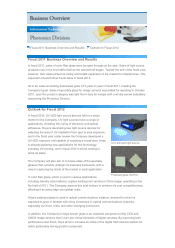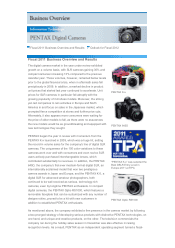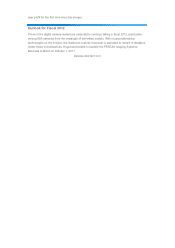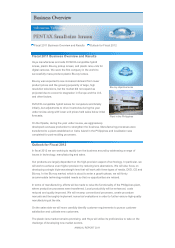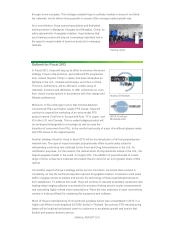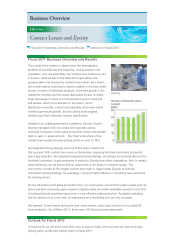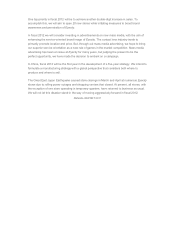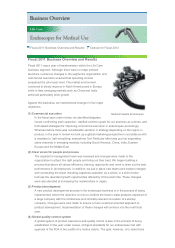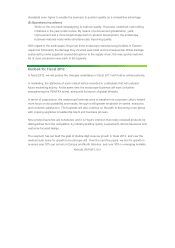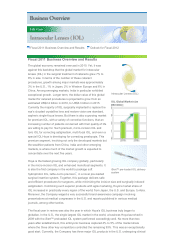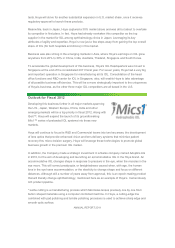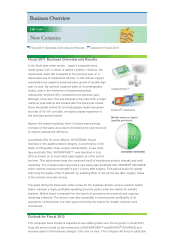Pentax 2011 Annual Report Download - page 43
Download and view the complete annual report
Please find page 43 of the 2011 Pentax annual report below. You can navigate through the pages in the report by either clicking on the pages listed below, or by using the keyword search tool below to find specific information within the annual report.
Fiscal 2011 Business Overview and Results Outlook for Fiscal 2012
Fiscal 2011 Business Overview and Results
The contact lens market in Japan faces the demographic
problem of low birthrate and longevity. Young people in the
population, who are potentially new contact lens customers, are
in decline, while people in the baby boom generation are
growing older and leaving the contact lens market. As a result,
the overall market continued to decline slightly in the year under
review. In terms of individual products, there was growth in the
market for one-day and two-week disposable lenses, but also
large decreases in users of conventional long-wear hard and
soft lenses, which put a damper on the sector. As for
distribution channels, contact lens specialty stores and online
outlets experienced growth, but eye clinics and eyeglass
retailers saw their channels contract significantly.
Despite such challenging market conditions, Eyecity, Hoya's
directly managed chain of contact lens specialty stores,
achieved increases in both sales and profits. Sales rose double-
digit on year. In sales amount, the chain’s top share of the
market rose roughly two percentage points on year to 18%.
Our targeted pricing strategy was one of the major reasons for
this success. With contact lens users on the decline, acquiring first-time customers at Eyecity
was a key objective. We adopted a targeted pricing strategy, involving a promotional discount for
first-time customers, to get customers to switch to Eyecity from other competitors. And, in certain
sales territories, we set prices with an awareness of the peers to compete locally. The
economies of scale as the largest contact lens chain in Japan made Eyecity to execute
competitive pricing strategy. As a strategy, it proved highly effective in acquiring new customers
for existing stores.
On the advertising and sales promotion front, we continued to convert from paper media such as
flyers and free community paper inserts to digital media. An email newsletter issued to over 30%
of existing Eyecity members has proven a very effective sales promotion. As digital marketing
can be carried out at a low cost, its importance as a marketing tool can only increase.
We opened 18 new stores during the year under review, which was just short of our initial 20-
store projection. As of March 2011, there were 181 Eyecity stores nationwide.
Outlook for Fiscal 2012
In fiscal 2012, we will strive more than ever to stay on track of the success we had continually
raising sales, profits and market share in fiscal 2011.
EyeCity
Number of EyeCity stores
(Japan)





